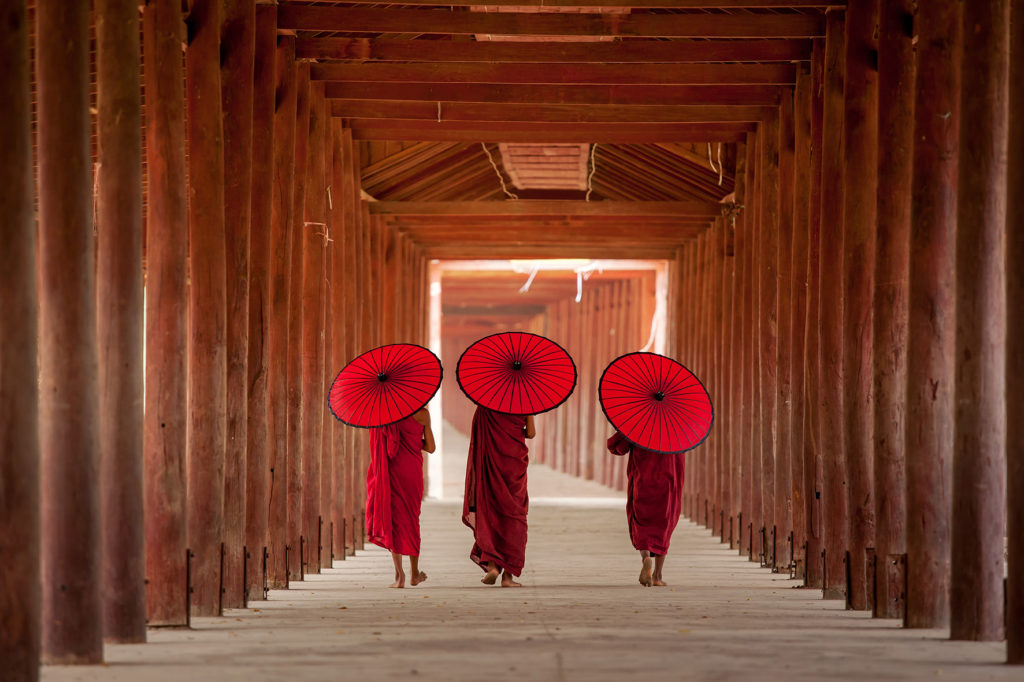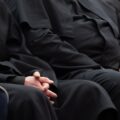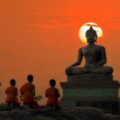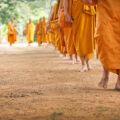Power and abuse in Buddhism: Sogyal Lakar and Rigpa
Power and abuse in Buddhism: Sogyal Lakar and Rigpa
While sexual abuse has been a problem throughout human history, its connection to religion became especially apparent after the abuse scandals in the Roman Catholic Church started coming out in the 1980s and 90s. What very few people are aware of however, are similar scandals in the Buddhist religion, which started emerging around the same time. The most prominent of these was the case of Sogyal Lakar (‘Rinpoche’), the founder of ‘Rigpa’, who recently died in 2019. As this article shows, he inflicted abuse on his students for decades.
Sogyal Lakar gets exposed
Sogyal Lakar (a.k.a. ‘Rinpoche’), the founder of Buddhist organisation Rigpa, was probably the most famous Buddhist teacher after the dalai lama, and was mainly known for his international bestseller The Tibetan Book of Living and Dying, which sold more than 3 million copies.[1] While Sogyal claimed to be a lama, his credentials had no basis in reality, because the historical records show that he never completed any comprehensive Buddhist or academic education. The two-year period (between 1957 and 1959) where any continuous Buddhist training could have taken place would only be sufficient to teach basic reading, writing, and memorisation skills.[2] Rigpa has claimed to have 130 centers in 41 countries, and its main centre, Lerab Ling (France), is the largest Tibetan Buddhist temple in the West. Allegations of abuse were already being made against Lakar in the 1970s, including a $10 million lawsuit in 1994, but they truly caught media attention in 2017, with the publication of an open letter to Lakar by eight of his close students, detailing the decades of abuse they and other students had suffered under his tutelage.[3]
Physical, sexual, and psychological abuse
The main accusations against Soygal were that he had consistently abused his close students physically, sexually and emotionally, including regular beatings, rape, harassment, adultery, and manipulating vulnerable young women (some of whom had a history of sexual abuse) into sexual acts.[4] However, many students found the psychological abuse to be the most damaging. This included public shaming, humiliation, and threatening his students with spiritual punishments if they disobeyed him. For example, he would tell his students that they would die a gruesome death if they defied his commands, or that their relatives had gotten sick or had died because his students had displeased him in some way. While this may not seem like a credible threat to people who are not Tibetan Buddhists, it is a real threat within the context of that worldview. Lakar was all too fond of exploiting the worldview of his students in this way, such as by justifying his abusive behaviour as a form of “wrathful compassion” in the tradition of “crazy wisdom,” and therefore as a traditional form of teaching designed to liberate them from their “habitual patterns.”[5] It is still an ongoing debate whether unconventional behaviours of this kind have actually been used in the past as a method of teaching. For example, Dzongsar Khyentse Rinpoche often showcases such stories about the founders of his lineage in the 11th century, such as Marpa beating up Milarepa, or Tilopa telling Naropa to pinch a princess’s butt in public so that he would get beat up.[6] Most academics would argue that these stories are hagiographies (legendary biographies), and were therefore not written to give an accurate historical account of events.[7]
Financial abuse and a lavish lifestyle
Another form of abuse that Lakar and his close associates engaged in was financial misconduct. The Lerab Ling centre was a money magnet, drawing in €1 to €1.5 million per year just in retreat fees, plus other sales and donations.[8] The donations, which reached into the thousands per year, were claimed to be used for charitable and benevolent purposes, while Lakar secretly used them to fund his hedonistic and gluttonous lifestyle, which included expensive cigars, masseuses, chauffeurs, and fancy restaurants.[9] While there is nothing wrong with a luxurious lifestyle per se, it is definitely unethical to finance it with money that people have donated for Buddhist charitable causes. It is also hypocritical and deliberately deceptive to then constantly emphasise how Sogyal lived “a modest life” and kept “nothing for himself,” as his inner circle did.[10] In September 2018 the French police raided the Lerab Ling temple to take testimonies from attendees, and to seize financial documents. They also found a safe filled with tens of thousands of euros in cash and gold. The French had performed a previous year-long investigation in 2016-17, during which they collected other information and testimonies dating to the 1990s.[11] Investigative journalists from Pointer and Investico also discovered that the Dutch branch of Rigpa had falsely obtained ANBI (tax-exempt) status because it failed to meet many of the necessary criteria, enabling it to evade taxes for years.[12] The news that Lakar used charitable donations for his personal pleasure did not affect the ANBI status either. One of the trustees of the Rigpa Fellowship charity and Lakar’s right-hand man, Patrick Gaffney, has also been banned from working for any charities for at least eight years, because he had knowledge of Lakar’s abuse but failed to take appropriate action, thereby making him an accomplice.[13]
Guilt without justice
Almost all allegations against Sogyal were found to be truthful by an independent legal investigation conducted by the Lewis Silkin firm, including the fact that many of his senior students were accomplices to his abusive behaviour.[14] Unfortunately, Lakar died before he could be properly tried in court.[15] The dalai lama, whom Lakar always claimed supported him, also came out in 2017 and publicly denounced Lakar by saying that “now he is disgraced.”[16] He recommended that anyone who witnesses Buddhist teachers commit abuse should make it public through the press or radio.[17] The dalai lama unfortunately failed to take his own advice, because he admitted to knowing about the abuse cases of Sogyal and Buddhists since the 1990s.[18] The fact that it took him, and many other prominent teachers, more than two decades to speak out does not inspire hope in the self-cleansing capacity of the international Buddhist community.
Timo Pieters
Do you want to stay updated on the latest news on religion & society? Create an account on the EARS Dashboard and receive free weekly updates.
[1] Tibetan Buddhism Enters the 21st Century: Trouble in Shangri-la.
[2] Finnigan, Mary & Hogendoorn, Rob. Sex and Violence in Tibetan Buddhism: The Rise and Fall of Sogyal Rinpoche. Portland: Jorvik Press, 2019. p. 23, 24, 28.
[3] Open Letter to Sogyal Lakar – July 14, 2017.
[4] Sexual assaults and violent rages… Inside the dark world of Buddhist teacher Sogyal Rinpoche.
[5] Open Letter to Sogyal Lakar – July 14, 2017.
[6] Dzongsar Khyentse Rinpoche Issues Public Statement on Recent Criticism of Sogyal Rinpoche.
[7] Davidson, Ronald M. Indian Esoteric Buddhism: A Social History of the Tantric Movement. New York: Columbia University Press, 2002. p. 316.
[8] Tibetan Buddhism Enters the 21st Century: Trouble in Shangri-la.
[9] Open Letter to Sogyal Lakar – July 14, 2017.
[10] Sexual assaults and violent rages… Inside the dark world of Buddhist teacher Sogyal Rinpoche.
[11] Hérault : le temple bouddhiste Lérab Ling de Roqueredonde et sa communauté perquisitionnés.
[12] Liefdadig rariteitenkabinet.
[13] Trustee of UK charity ‘covered up abuse’ by Buddhist guru.
[14] Final report 22/8/18.
[15] Sogyal Rinpoche Dies; Tibetan Buddhist Lama Felled by Abuse Accusations.
[16] Sogyal Rinpoche Dies; Tibetan Buddhist Lama Felled by Abuse Accusations.
[17] Dalai Lama denounces ethical misconduct by Buddhist teachers.
[18] Dalai Lama Admits to Knowing about Abuse in Tibetan Buddhism.






